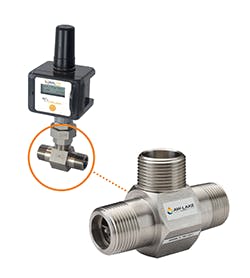AW-Lake Launches TW Series Turbine Flow Meter For Rigorous Flow Measurement Applications
AW-Lake Company introduces the TW Series Turbine Flow Meter for rigorous flow measurement applications. Suitable for use on and off the oil field, the TW Series Turbine Flow Meter provides accurate (to ±1% of reading or better) and repeatable (0.1% repeatability) flow measurement of oils, water and some chemicals. The meters or meter internals are also cost effective and easy drop-in replacements to Kimray, NuFlo, Haliburton, Cameron and Blancett turbine flow meters in existing applications, according to the company.
The TW Flow Meters are available in a wide range of sizes and easily integrated with the SignalFire Flow Totalizer as part of a wireless flow control system. Working together, the Flow Meter and Totalizer can measure, locally display and wirelessly transmit intelligent flow data to a Gateway for remote monitoring and control on a PC, PLC or other control system.
AW-Lake’s TW Series Turbine Meters are available in flow ranges from 0.6 to 5,000 gallons per minute and feature a 316 stainless steel construction, tungsten carbide rotor shaft and tight machining tolerances for excellent durability and long life. With working pressures up to 5,000 psi and fluid temperatures from -150º to 350° F, the TW Turbine Flow Meters are ideal for a variety of liquid flow applications such as:
• Chemical injection: turbine flow meters work upstream, midstream and downstream.
• Drilling applications: When packaged as a battery-powered solution, the TW Turbine Flow Meter is ideal for well drilling applications where the power for the drilling rigs originates from mobile generators.
• Fracking and Flowback: Metering of used and reclaimed water is a primary application for these turbines. The TW Turbine Flow Meter monitors the water as well as the chemicals used to treat the water.
• Natural Gas pipeline (midstream): The TW Series Turbine Flow Meter works in a variety of pipeline installations including those for metering stations, chemical injection, and offloading to smaller pipelines for delivery or truck loading stations.





